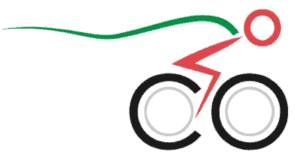If you are about to buy an electric bike and are looking for the best way to decide how to pick it, you are in the right place for support. In this buying guide, we will give you the characteristics and features you should be looking for when considering the purchase..
The characteristics of the motor and battery, and all that entails, are crucial when choosing an electric bicycle, but they are not the only ones to consider. Therefore pay attention to the type of bike and the sensors it has, its weight, the type of tires it has, and last but not least, its price.
Now, let’s dive deep into the details and unpack the above!
All About Motors
The motor isn’t the most important part of your e-bike, but it’ll definitely have a big impact on how your bike feels. Here’s everything you need to know to decipher cryptic product pages and figure out what you need for your bike.
Electric bikes built for everything and priced for everyone. Shop Rad Power Bikes, America's #1 electric bike brand. Get out. Go further. Ride Rad.
Most e-bike motors fall into one of two categories:
Hub Motors
A hub motor is built into your bike’s wheels. These motors apply torque directly to your wheels, meaning that they don’t put any wear on any other parts of your bike.
The downside here is that they tend to be less flexible than mid-drive motors when it comes to applying torque. Hub motors also make it much more complicated to fix flat tires and perform other maintenance on whichever wheel they’re on.
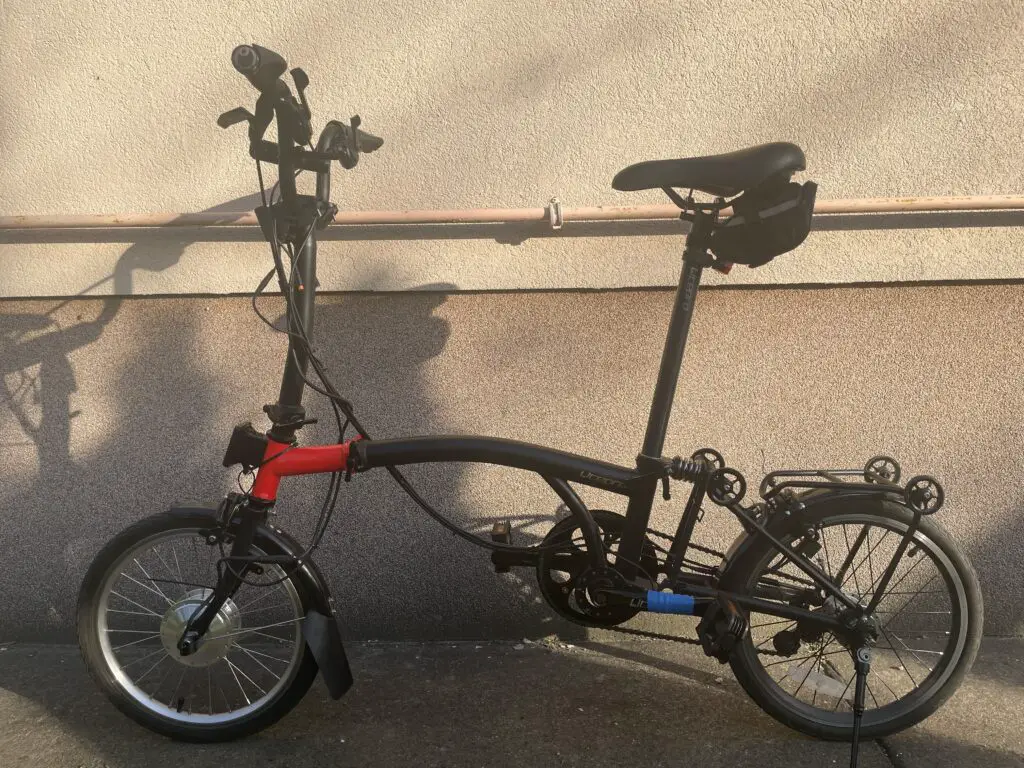
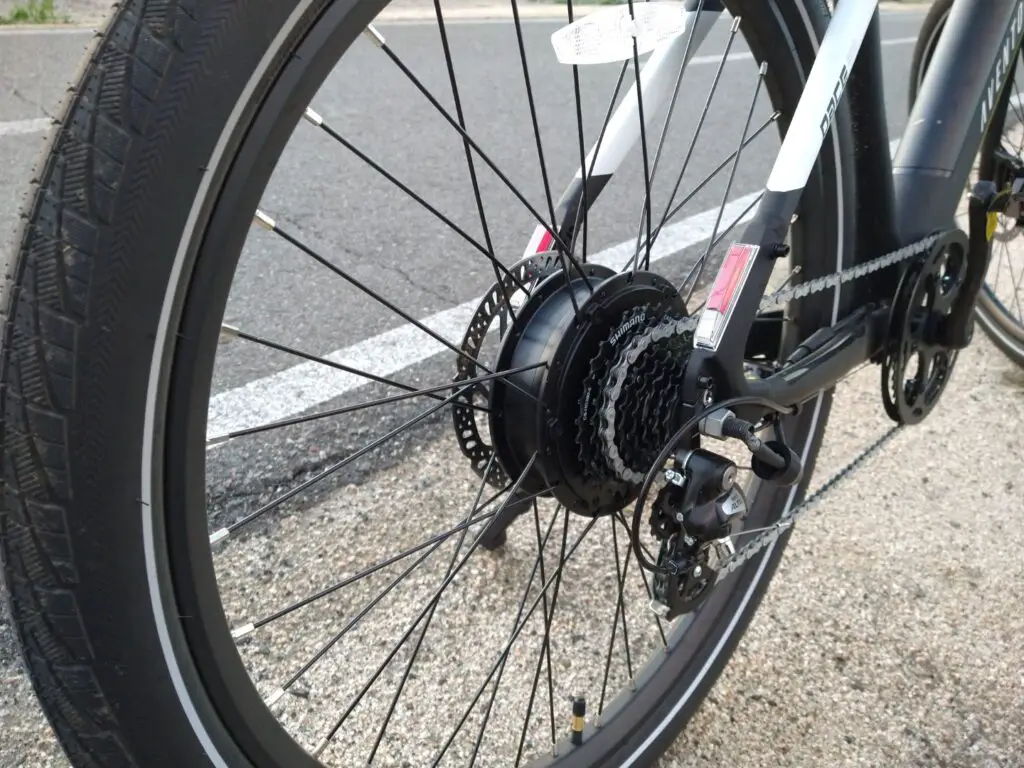
You’ll usually see a single hub motor on the rear wheel of e-bikes, although some e-bikes have motors in the front or on both wheels. Common wattages range from 250w to 750w, although you’ll see bikes with colossal 1500w hub motors every once in a while.
Mid-Drive Motors
Mid-drive motors live in your bike’s bottom bracket. These motors apply their torque to your chainring, meaning that they use your bike’s chain and gears to turn the back wheel.

This has a big advantage when it comes to torque since you can shift gears to change how hard its to make your bike go. On the other hand, it can make maintenance more complicated since your motor is putting out a lot of power and sending it through your drivetrain.
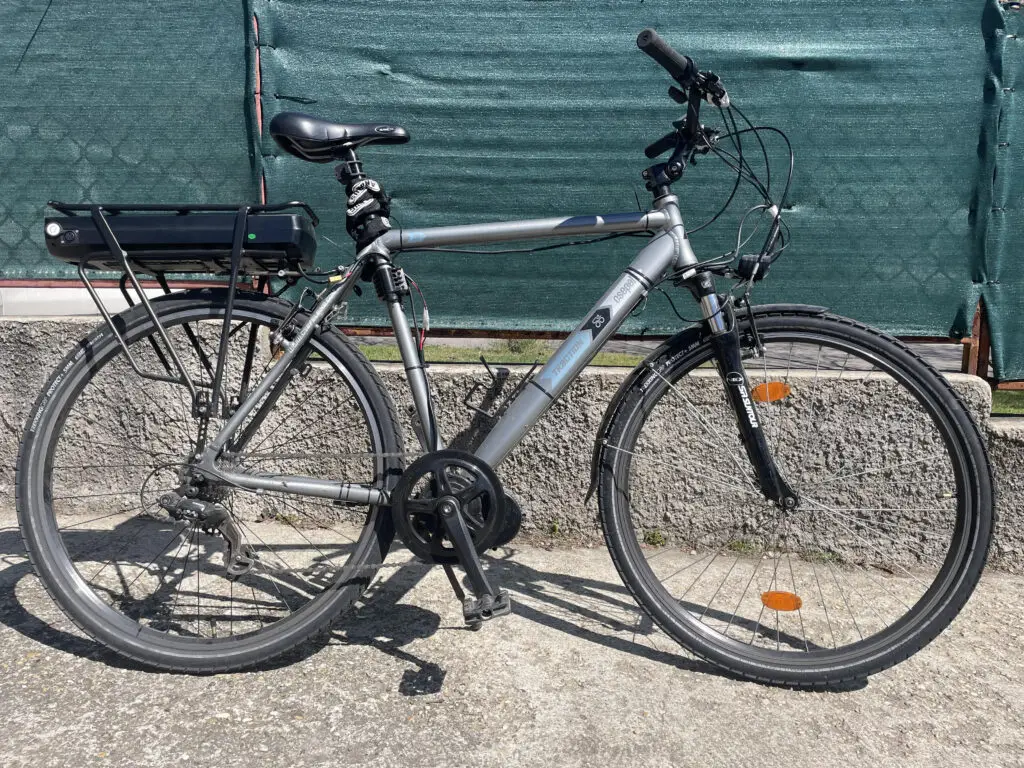
Mid-drive motors tend to be much less powerful than hub motors since they can take advantage of your bike’s gears. You’ll see a lot of bikes with 250w mid-drive motors, a few with 500w motors, and a few with 750w motors.
How Powerful Are E-Bike Motors?
Serious cyclists use wattage as a way of measuring how much power they’re putting into their bike pedals. A professional cyclist can average 400 watts of power output for a couple of hours.
This means that an e-bike with a 500w mid-drive motor is going to be faster and more powerful than a bike ridden by a serious cyclist, even if you’re not pedaling. If you are pedaling, a bike with a 250w mid-drive motor can climb hills like you’re a Tour-de-France finalist.

Hub motors are more complicated. Hub motors often have some internal gears, but they’re much more limited in their power band than mid-drive motors. The good news is that their optimal power band is usually set up for high-speed riding.
A 750-watt hub motor can easily propel your bike over 28 miles an hour without help from you. A 500-watt hub motor might need a bit of help to stay at 28 miles an hour (if it’s set up for torque) or might struggle on starts and steep hills (if it’s set up for speed).
A 250 or 350-watt motor means that you’ll need to help your bike for optimal performance, but you’ll still be able to fly up hills without a lot of effort.
Nominal Versus Peak Wattage
Bike manufacturers use intentionally confusing descriptions to make you think that their motors are bigger or smaller than they actually are.
“Nominal” output describes the highest level of long-term power that a motor can handle indefinitely. This means that if you feed 800 watts of power into a 750-watt motor, it will eventually overheat.
The key word here is “eventually.” Many states limit e-bike motors to 750 watts or under. In order to get around this, motor companies make motors that can’t handle more than 750 watts indefinitely but are totally fine with brief spikes of power.
The peak wattage of your motor is how powerful it can be in the worst-case scenario – when you’re accelerating up a steep hill, for example. You’ll sometimes see peak outputs of 1000 to 1500 watts on “750-watt” motors.
It’s important to make sure that you know which number is used for each bike you’re comparing. A bike with a 500-watt nominal, 750-watt peak motor will feel a lot less powerful than a bike with a 750-watt nominal, 1300-watt peak motor, even if both bikes have their power listed as “750 watts.”
In general, electric motors struggle with low-speed torque but excel at high-speed operation. This means that you’re totally fine with a motor with a low nominal wattage but a high peak wattage.
This also means that most e-bikes will feel much faster if you pedal a little bit as you accelerate from a stop. You’ll also get pretty big range gains if you help your bike out just a little bit on hills and flats.
Battery
Your e-bike’s battery is vital for supplying power to the bike’s motor. Here are a few of the factors you might want to consider when comparing the batteries on different bikes.
Internal Versus External Batteries
While some e-bikes still have batteries that are housed outside of the frame, more and more modern e-bikes have batteries that fit seamlessly into the frame of the bike.
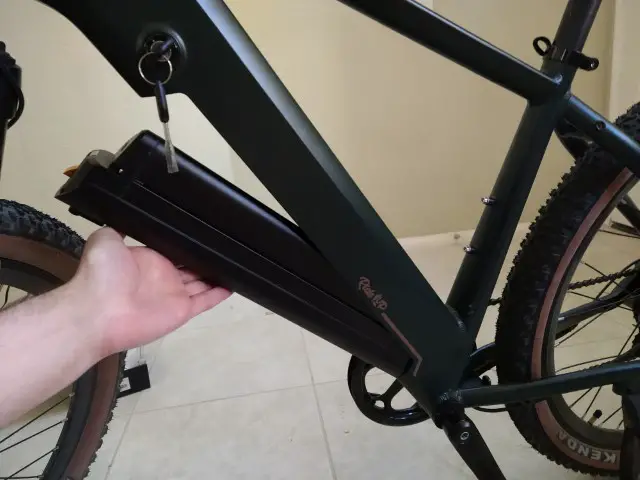
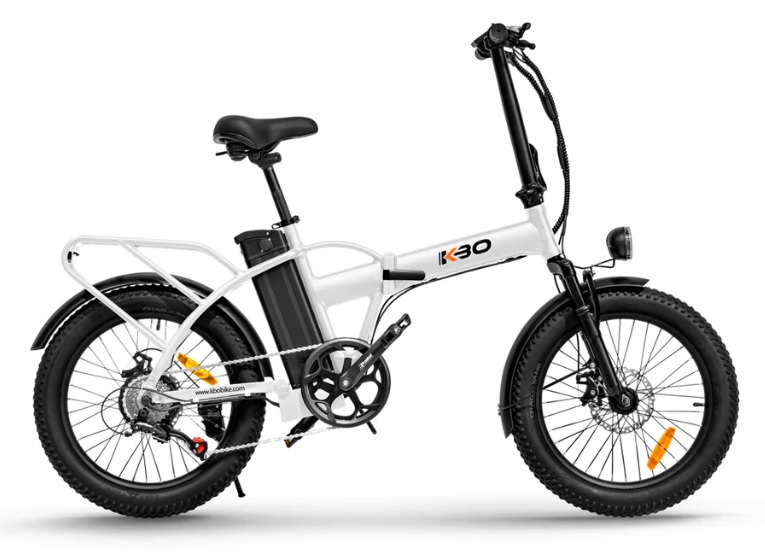
External batteries are more obvious, but they’re easier to access and much easier to replace with third-party options. Internal batteries, on the other hand, are practically invisible, but you’ll probably want to stick with first-party options if you need an additional battery.
How To Tell Which E-Bike Battery Is Bigger?
If you’re looking for how big a battery’s capacity is, look for the amp-hour or watt-hour numbers. A battery with twice as many amp-hours of power has twice as much juice as a battery with half as many amp-hours.
Different companies use different measures, however, so you may need to convert between the two metrics. To get watt-hours, multiply amp-hours by voltage. To get amp-hours, divide watt-hours by voltage.
In general, a battery with more capacity will offer more range – but it will also be heavier.
Remember that you can always buy a second battery, charge both, and carry the spare with you. This is especially helpful for touring and commuting since you’ll probably be carrying some cargo already.
Charging Considerations
E-bike batteries are almost always very standard lithium batteries in bike-friendly form factors. If charging speed is a big concern, you’ll probably want a fast charger, not a special battery.
Most modern e-bike batteries can be charged while on or off of the bicycle, but if on-bike charging is especially important, be sure to verify that the bike you’re looking at has a charging port.
Comparing Numbers Across Bike Types
A big, heavy bike that gets 30 miles per charge is very different from a light, efficient bike that gets 30 miles per charge. On the first bike, you’re less able to extend the range of your bike via human effort.
Running out of power mid-ride will also feel pretty bad. On the second bike, a little bit of effort will massively increase your range, and you might turn off the motor entirely on flat ground, even if you have lots of battery remaining.
This means that you should be careful when comparing e-bike statistics in a vacuum. Try to maintain a holistic view of the bike and put each metric in context. A bike with “worse” metrics might wind up being better for your use case than one with “better” numbers.
Bike Types / Riding Styles
There are a lot of different kinds of bikes out there. For just about any type of bike you can think of, you can find at least a few e-bikes of that type.
You’ll find terrifyingly light road bikes, powerful, rugged mountain bikes, long-range touring bikes, and useful commuters and city bikes. You’ll also find lots of cruisers, adventure bikes, and other options that are designed to let you have fun and tackle any terrain.
Here’s a quick overview of some of the more common bike types and who they’re designed for:
Road Bikes
These are very light bikes with skinny tires that favor aggressive riding styles. They’re designed for speed and exercise, not for transportation and utility.
Hybrid / City / Commuter Bikes
These three categories are all very similar. They’re bikes that are designed as effective transportation options for city dwellers.
This means that they’re fast and efficient to pedal without sacrificing utility. Expect road-style tires, cargo options, and a more upright riding position than road bikes.
Mountain Bikes
These bikes are designed for off-road riding, often on treacherous trails. Expect big knobby tires, suspension, and maybe even a seat that can slide down at the push of a button.
Cruisers
Cruisers traditionally have high swept-back handlebars and a relaxed, upright riding position. They’re designed for slower, casual rides, allowing you to simply enjoy yourself as you go.
Adventure Bikes
Bikes that are perfect for trips and outings. These aren’t mountain bikes in the classic sense but are instead perfect for riding on less treacherous dirt trails – or big stretches of wilderness. Think exploration, not big drops.
Touring Bikes
Touring bikes are designed to be ridden for hours at a time for days on end. They come with dependable, rugged parts, cargo-carrying options, and lots of low gears for tired riders.
Touring bikes usually make great commuter bikes, but the reverse isn’t always true – your city bike might not like riding on dirt roads for four or five hours, but your touring bike will feel right at home.
Cargo Bikes
These bikes are set up to pull trailers or carry heavy objects. They tend to have sturdy frames, powerful motors, and lots of gears. You’ll generally find more cargo-carrying options on cargo bikes than on other bikes, but this isn’t always the case.
Riding Styles
When we talk about bike “riding styles,” we’re talking about how you sit on the bicycle. Cruisers, for example, have high handlebars and low seats. This means that the rider will sit totally upright.
Road bikes, on the other hand, have very high seats and low handlebars. This means that the rider will need to bend over to ride the bicycle.
In general, if you want to stay seated while pedaling hard, you’ll probably want a bike on the more aggressive side of things. If you want to relax while you’re riding, however, you’ll want a bike with a less aggressive riding position.
Your personal preference should be the biggest factor when considering different riding styles. Go for what you’re used to. If you’ve spent a lot of time riding cruisers, you’ll probably want to choose a city bike with a particularly relaxed riding position.
If you’re used to riding road bikes, on the other hand, you might want a commuter with lower handlebars and a seat that’s farther back. In the below articles, you might be able to find inspiration to find out what type of electric bike exactly you are looking for:
The best 750 Watt electric bikes here.
The best electric bikes for adults.
Tires and Weight
Your bike’s tires are generally determined by which type of bike you choose.
A city bike, for example, will have tires that are designed for riding on pavement. An adventure or mountain bike will have knobby tires that are designed for off-roading.
In general, as long as the type of tires on your bike match up with the use case you’re intending, you’ll be fine.
So why don’t all bikes have big fat tires for better grip? The answer is drag. The wider and knobbier your tire is, the more rolling resistance it causes. Fat tire e-bikes are less efficient to pedal and take more motor power than bikes with skinny road tires.
This means that it’s generally better to go with the skinniest, smoothest tires you can get away with for your intended use case. Planning to mostly commute with some light dirt riding on the weekend? Hybrid tires are totally fine.
It is worth briefly noting that it’s a big pain to change tires on bikes with hub motors. Because of this, e-bike tires are generally much thicker and more resilient than normal bike tires. Expect fewer flats – but also expect to need more time and tools when you do get one.
Does Weight Matter?
E-bikes can get pretty heavy. The lightest e-bikes tend to be about 10 pounds heavier than conventional bikes in the same style. Heavy e-bikes range from 70 to 100 pounds.
While your bike’s motor means that it’ll stay easy to pedal at any weight, a heavy bike will still feel heavy. It’ll feel less like a nimble bike and more like a motorcycle. It’ll also make the bike more awkward to carry up stairs or maneuver through doors.
On the flip side, more weight means that the bike can have a much bigger motor and battery. Heavy bikes often have huge motors and batteries, giving them maximum ranges of 60 miles per charge – or more.
If you’re less concerned with feel and more concerned with range, the weight might not be a big downside.
Think about your use case when considering the weight of a bike:
- Do you want to do a lot of riding with the motor off, or on low pedal assist levels? Look for a lighter bike, but be aware that you might wind up with less range or a less powerful motor.
- Do you need lots of range and plan to use the motor a lot? Be willing to accept a heavier bike in order to meet your other needs.
Cadence and Torque Sensors
Most e-bikes have a pedal assist mode. When this is activated, your e-bike’s motor helps you out as you pedal. Your e-bike detects when you’re pedaling in one of two ways: with a cadence sensor or with a torque sensor.
A cadence sensor simply detects when your pedals are spinning. This is usually achieved via a ring of magnets. Cadence sensors can’t tell how much force you’re applying to the pedals. It also usually takes a couple of pedal revolutions before your bike figures out that you’re pedaling.
On the flip side, cadence sensors always know if you’re pedaling, so it doesn’t matter how much effort you’re using or what gear you’re in.
A torque sensor, on the other hand, detects how much power you’re putting into your pedals. This has two big advantages: it detects the instant you start to pedal, and it means that your bike can modulate its power output to match yours. The harder you pedal, the more effort your bike’s motor will put in.
The downside here is that torque sensors struggle to detect you pedaling at low levels of effort. If you’re cruising along at a relaxed pace, your bike might think you’ve stopped pedaling entirely and shut off the motor.
This is very much a personal preference thing, so if you can, try out a few models with both types of sensors. For me, torque sensors generally feel more responsive and fun to ride than cadence sensors.
Torque sensors are more complicated and expensive, however, and the difference is minor enough that sensor type is pretty far down my list of things to consider when buying an e-bike.
Where To Buy E-Bikes
After you’ve found your ideal e-bike, where can you get it? In general, most sources that sell regular bikes can help you find an e-bike.
Your local bike store might not have a big selection, but they can probably order a bike for you if you ask. Secondhand sources include Craigslist, EBay, and Facebook Marketplace.
The very best sources for e-bikes are local specialty stores and the manufacturer’s website. Most cities will have a few bike shops that specialize in e-bikes. These are great places to go to test out various bikes and have a live expert answer all of your questions. Your local e-bike shop won’t have everything, but they’ll definitely have enough bikes for you to get a feel for what you want.
If you’re after the cheapest way to get an e-bike and you’d like the best range of options, you’re going to want to order your bike directly from the manufacturer. This is pretty simple – you head over to the manufacturer’s site, add the bike you want to your shopping cart, and check out.
In order to make things easier for you, many sites (including this one) have pages with information on lots of bikes from different manufacturers with links to the store page for each bike. This makes comparing and purchasing an e-bike online much easier.
If you do order an e-bike online, it’s a good idea to leave a little bit of room in your budget for a professional tune-up. Bike components can get bent or misaligned during shipping, and many bikes ship partially assembled.
While you might not need to use your tune-up budget, it’s a good way to reduce your stress level and ensure that any shipping complications can be smoothed out by a professional.
Further Preliminary Considerations Before the Purchase
What Is An E-Bike?
An e-bike is a bike with an electric motor. While there are technical legal definitions of this term in some areas, the term “e-bike” is usually used to refer to bikes with motors that can put out between 150 and 1500 watts of power and with motor-powered top speeds of 12 to 40 miles an hour.
E-bikes can be pedaled just like normal bikes. Lighter e-bikes feel just like “normal” non-electric bikes when you ride them with the motor off, while heavier e-bikes feel like bikes that have very heavy frames.
Most modern e-bikes are designed with a motor that can help you as you pedal, making anyone who rides them capable of riding up hills at speeds that make a professional cyclist jealous.
Why E-Bikes?
If you’ve never ridden an e-bike, the following list of benefits might not seem like a big deal. I promise you that these benefits feel absolutely huge in practice. The more time I spend on an e-bike, the more I appreciate the flexibility and power offered by the motor.
First, e-bikes allow you to choose both your speed and your level of effort. Want to go at 28 miles an hour for your whole ride? You can – even if your ride is entirely uphill.
Need to ride to a job interview and arrive looking and feeling fresh? You can, even if your interview is 8 miles away from your home.
Some people think that the addition of a motor means that e-bikes are for “lazy” people. This is not the case, you can read here my article about how you can get a workout on an electric bike.
Conversely, I think that the more you want to use a bike for exercise, the more useful the motor is. E-bikes allow you to target specific levels of exercise on any ride, allowing you to focus on your zone-two training (or whatever it is you’re working on) without needing to plan out a special route.
Equally importantly, e-bikes reduce the barrier to entry for going on a long ride. If you’re like me and you often abandon your exercise plans because you simply aren’t feeling energetic, an e-bike might be perfect for you. It’s a great way to overcome your mental objections and get out the door and on your bike.
E-bikes also allow you to go on bike trips that are very long without a lot of planning or effort. On an electric bike, I’m very comfortable picking a random trail in my area and riding it until it ends.
I’m also a lot more comfortable riding my bike for errands, work, or social events. I know the bike can carry me home no matter how tired I get. This means that I feel confident using it as a transportation option.
Who Should Buy An E-Bike?
I think that e-bikes are a great option for just about everyone.
They’re a great option
- for people who want to get out and exercise more,
- for serious cyclists who want to extend their range and do targeted training,
- for people who need an additional transportation option, and
- for people who just want to enjoy riding bikes.
There are a plethora of styles of e-bikes from many manufacturers, so it’s very likely that you can find one that’s perfect for you!
E-bike Types and Legality
Before we go further, let’s take a moment to talk about the laws that govern e-bike usage in the United States.
Class 1, 2, and 3
E-bikes are often broken up into three classes: 1, 2, and 3.
Class 1 e-bikes have motors that can assist the rider, but only when they are pedaling. The motor cannot help at speeds above 20 miles an hour.
Class 2 e-bikes can use motor power while the rider isn’t pedaling, but they’re still limited to a motor-assisted top speed of 20 miles an hour.
Class 3 e-bikes can use their motors at speeds of up to 28 miles an hour, but the rider is supposed to be pedaling while the motor is engaged.
Less Universal Than You Think
While e-bike makers have tried to standardize things to some degree, the laws that surround the usage of e-bikes vary by state and city. New York, for example, has very strict laws and does not allow some classes of e-bikes at all. Be sure to do your own research to find out how e-bikes are defined and regulated in your area.
This is my understanding of how laws affect me in California:
- Class 3 e-bikes are legal to ride on roads in the same way you’d ride a bicycle, but you have to wear a helmet.
- Class 2 e-bikes are legal to ride on public bike trails in the same way you’d ride a bicycle, but you have to wear a helmet.
- Class 3 e-bikes are legal to ride on some public bike trails, but it’s up to the city to designate which.
- Motor-assisted bikes that fall outside of the class 3 designation or have motors that exceed 750 watts of output are no longer e-bikes and are subject to a different set of laws.
